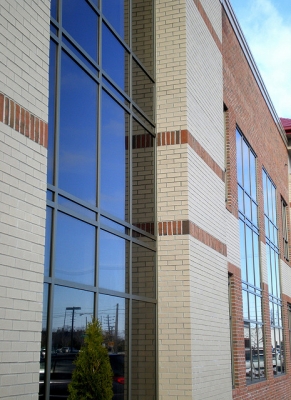Smart Buildings - More Than Just Energy Efficiency

The smartest people in the commercial real estate industry agree--if we really got energy efficiency in buildings right using smart building technologies, corporations could save so much money that there would be little need for solar panels or windmills. While most experts are still strong supporters of these alternative energy sources, they agree that extreme energy efficiency measures could have very dramatic positive results.
On the other hand, there are an increasing number of people who are growing disenchanted with the energy efficiency movement. It is not that they are against the idea, it just seems like it is an "all or nothing" proposition, and one of the major aspects of smart building technologies is the impact they can have on OPERATIONS and TENANT SAFETY/SATISFACTION as well as energy efficiency--which solar panels and windmills don't offer.
In our world of buildings, a world that impacts us every time we enter an office, mall, school or sporting venue, and an environment that requires a great degree of operational support, why totally ignore the operational benefits, financial and human productivity possibilities, and tenant safety/satisfaction potential of intelligent, connected, high performance smart buildings?
This new generation of smart buildings, in which an IT infrastructure is laid on top of a building and every electro-mechanical device is IP enabled and connected with the ability to send data and be controlled, can provide energy savings and a WHOLE LOT MORE. The concept of centralized portfolio control with dramatically reengineered workflow, combined with advanced data analytics and visualization, could have an equal (if not greater) impact on the operational and tenant satisfaction bottom line of a building when comparing energy efficiency and savings.
Building owners care a lot about the costs of running a building. If these state of the art concepts and technologies can significantly reduce operating costs, why not exploit that fact? These details should be included in the overall strategy when cost-justifying the retrofitting of existing buildings. It makes sense to look at every aspect of these intelligent and smart buildings. Go through the front door with energy efficiency but, by no means stop there; operational efficiency and tenant satisfaction will round out the complete justification for making smart building investments.
One small, yet interesting example of this approach would be the management of fire extinguishers. Despite more technology in an iPhone than we had on the first space launch, we continue each month to walk every square foot of our buildings in search of a fire extinguisher with a small paper card attached and a hole to punch. With some pretty basic smart building technology, we can connect those fire extinguishers to a network and monitor them in real time, with almost no future financial investment. This also has a good sustainability aspect, as we are not using natural resources to transport humans in their search for cards to punch.
Another area relevant to smart building technology with a very fast payback is digital signage. Despite the fact that the hardware and technology costs have become very competitive, we continue to rely on analog solutions to communicate information in our lobbies. If you look at the cost and process, with multiple people and methods of getting a tenant's name up on a lobby sign, it is a very inefficient way to communicate tenant information. In addition to a simple tenant directory, digital signage can also offer advertising (potential revenues), and fire life safety information in the event of an emergency.
Many different areas of a building's operations would benefit greatly from automation: HVAC, lighting, security/access, energy, fire/life/safety, lifts, water management, landscaping/irrigation, audio visual, digital signage, parking, voice/data and more.
If we truly want to take our buildings to the next level of sophistication and take advantage of all available technologies, then start thinking of the three categories that make a smart building--energy efficiency and conservation, operational efficiency, tenant safety and satisfaction. If we include all of these categories in our financial justification models, it becomes a much easier decision to retrofit and move our buildings into the 21st century.
